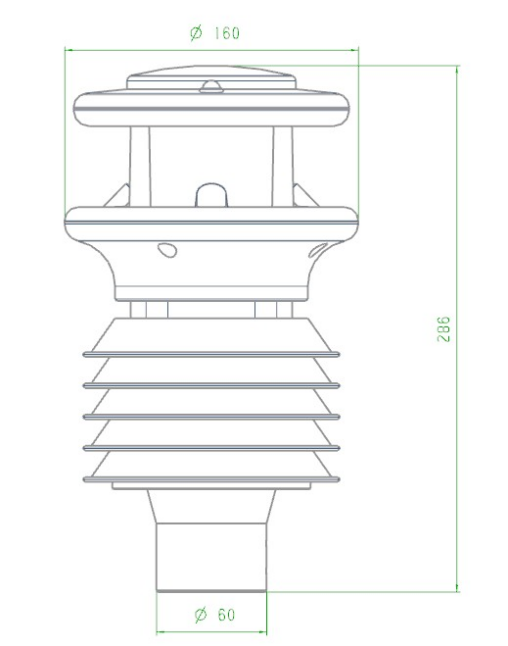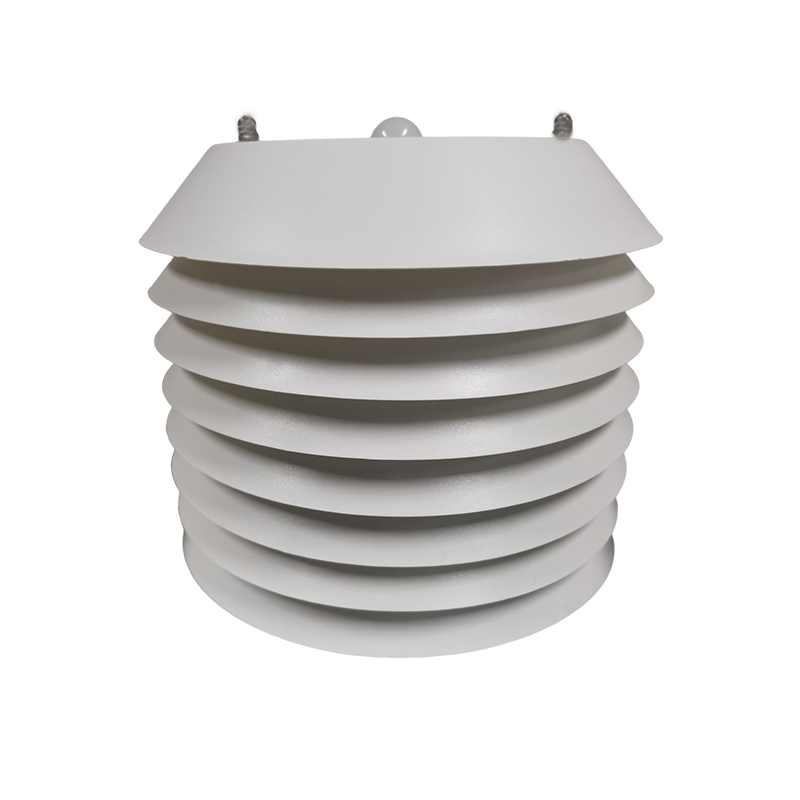

— Products —
 Consumer hotline +8618073152920
Consumer hotline +8618073152920 WhatsApp:+8615367865107
Address:Room 102, District D, Houhu Industrial Park, Yuelu District, Changsha City, Hunan Province, China
Weather Stations
All-in-One Ultrasonic Weather Station sensor is a fully digital detection, high-precision sensors, can quickly and accurately detect the wind speed, wind direction, atmospheric temperature, atmospheric humidity, atmospheric pressure, the built-in signal processing unit can be output according to the user's needs of the corresponding signals, can be optionally integrated with the PM2.5, PM10, noise, radiation, rain and other elements.Widely used in meteorology, environment, ai···
Tel/WhatsApp:+8615367865107
Email:Arvin@niubol.com +Nearly 100 partner company in more than 68 countries. We are committed to providing high-quality, practical products to meet your needs and help you solve problems.Product Details
All-in-One Ultrasonic Weather Station sensor is a fully digital detection, high-precision sensors, can quickly and accurately detect the wind speed, wind direction, atmospheric temperature, atmospheric humidity, atmospheric pressure, the built-in signal processing unit can be output according to the user's needs of the corresponding signals, can be optionally integrated with the PM2.5, PM10, noise, radiation, rain and other elements. High-strength structural design can work reliably in the harsh climate environment, high integration, rugged. Widely used in meteorology, environment, airports, harbours, laboratories, industry and agriculture, and transport.
All-in-One Ultrasonic Weather Station sensor Technical parameter:
| Supply Voltage | DC 9-24V |
| Signal output | RS485 |
| Communication protocol | MODBUS protocol |
| Baud rate | 9600 bps |
| Average power consumption | 0.4W (without dust sensor)/1W (with dust sensor) |
| Working Temperature | -40-80°C |
| Working Humidity | 0-95%RH |
| Protection Class | IP65 |
The principle of wind speed detection is to measure the ultrasonic transmission time from N sensor to S sensor and compare it with the transmission time from S sensor to N sensor. Similarly, compare the ultrasonic time from W to E and E to W. (N = North, S = South). (N = North, S = South, E = East, W = West) For example, if the wind is blowing from the north, the ultrasonic wave transmission time from N to S will be shorter than that from S to N, and the time from W and E will be the same as the E to W transmission time. By calculating the difference in transmission time of the ultrasonic waves between the two points, the wind speed and direction of the wind can be calculated. This calculation is not related to other factors such as temperature.
The rain sensor uses piezoelectric ceramic kinetic rain monitoring, which recognises raindrops according to the strength of their falling strike, and monitors everything from light to heavy rain, measuring individual raindrops and thus calculating the amount of rainfall. The raindrops are subjected to the weight of the raindrops and air resistance during the landing process, and reach the ground with a constant velocity, according to P=mv, the measurement of the impact can be derived from the weight of the raindrops, and thus the amount of continuous rainfall.
Weather Stations Technical parameter:
| Range | Accuracy | Resolution | |
| Wind speed | 0~60m/s | ±0.3+3%FS | 0.01m/s |
| Wind direction | 0~359° | ±3° | 1° |
| Temperature | -40~80℃ | ±0.5℃ | 0.1℃ |
| Humidity | 0~100%RH | ±5%RH | 0.1RH |
| Barometric Pressure | 10~1100hPa | ±1.5hPa | 0.1hPa |
| PM2.5 | 0~1000ug/m3 | ±10% | 1ug/m3 |
| PM10 | 0~2000ug/m3 | ±10% | 1ug/m3 |
| Noise | 30~130dB | ±5dB | 0.1dB |
| Illumination | 0~200000Lux | ±7% | 10Lux |
| Rainfall | 0~8mm/min | ±10% | 0.01mm |
| Solar radiation | 0~1500W/m2 | ±10% | 1W/m2 |
Ultrasonic multi-factor integrated sensors can meet a number of specifications and can be used in different environments around the world, with no complex maintenance or calibration required in the field.
1. Check frequently to ensure that the sensor is not interfered with by other operating equipment such as radio/radar transmitters, ship engines, motors, etc;
2. Do not install on a level surface with any radar scanning device, at least a distance of 2 metres should be maintained;
3. It is recommended to keep a distance from some of the surrounding radio receiving antennas;
3. Installation position should be far away from the source of vibration;
4. use the cable recommended by our company;

5. If the cable is cut and not properly connected, or if the cable shield is not properly connected, just wire it according to the installation guide instructions;
6. Ensure that the equipment is supplied with a continuous power supply during operation;
7. Avoid flotsam from surrounding buildings such as trees, utility poles, tall buildings, etc., which can have an effect on the accuracy of the ultrasonic wind speed and direction meter;
The World Meteorological Organisation gives the following advice:
1. Meteorological instrument installation standards: 10 metres above ground level in open areas; open areas are defined as 10 metres above the height of any obstacle to the meteorological instrument;
2. If installed on a building, the theoretical height of the meteorological instrument installation should be 1.5 times the height of the building;
3. if mounted on a boom on a mast, a tower or a branch of a mast, the length of the boom or branch must be twice the minimum diameter or diagonal of the tower. The boom needs to be installed on the side of the prevailing wind;


Installation methods are as follows:
Positioning: generally the unit is mounted on a vertical mounting tube to ensure that measurements are taken on the same horizontal plane;
Alignment: the detector should be installed with the pointing point pointing north before fixing.
Note: It is ideal to use a standard compass to determine the geographic north pole direction during installation and to keep the instrument pointing north in the same direction as the compass;
Installation: The mounting tube requires 3 equally spaced holes, tapping M5 screws, positioned 7.5mm from the top of the tube, and passing the cable through the mounting tube;
NOTE: The user must properly strain relief the cable. The plug can be connected to the unit's plug by rotating the plug and gently pushing inwards. Once the plug is attached, the plug can be locked in place by turning the outer sleeve clockwise. The device can be fixed to the mounting tube using 3 stainless steel screws. The customer must ensure that the unit is installed in an open area so that surrounding buildings do not obstruct the airflow or cause flocculation. Do not install the unit next to radar or radio transmitters.
Prev:Rain and snow sensor
Sensors & Weather Stations Catalog
Agriculture Sensors and Weather Stations Catalog-NiuBoL.pdf
Weather Stations Catalog-NiuBoL.pdf
Related recommendations
 Wind Speed sensor Output Modbus/RS485/Analog/0-5V/4-20mA
Wind Speed sensor Output Modbus/RS485/Analog/0-5V/4-20mA Tipping bucket rain gauge for weather monitoring auto rainfall sensor RS485/Outdoor/stainless steel
Tipping bucket rain gauge for weather monitoring auto rainfall sensor RS485/Outdoor/stainless steel 5-in-1 Temperature, Humidity, Air Pressure, Illumination, CO2 Sensor
5-in-1 Temperature, Humidity, Air Pressure, Illumination, CO2 Sensor 5 in1 Ultrasonic weather stations Atmospheric Pressure Temperature Humidity Wind Speed Direction sensor
5 in1 Ultrasonic weather stations Atmospheric Pressure Temperature Humidity Wind Speed Direction sensor 6 in1 Ultrasonic Weather Station Sensor for industrial & agricultural & environmental monitoring
6 in1 Ultrasonic Weather Station Sensor for industrial & agricultural & environmental monitoring 7 in 1 Ultrasonic Weather Station Sensor for Wind speed,Wind direction,Temperature, humidity, pressure,Illumin···
7 in 1 Ultrasonic Weather Station Sensor for Wind speed,Wind direction,Temperature, humidity, pressure,Illumin···
Screenshot, WhatsApp to identify the QR code
WhatsApp number:+8615367865107
(Click on WhatsApp to copy and add friends)